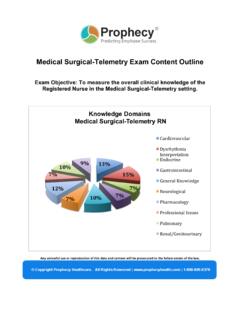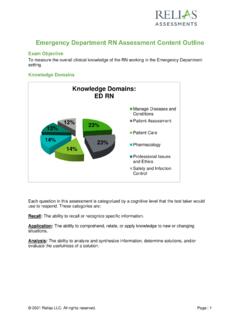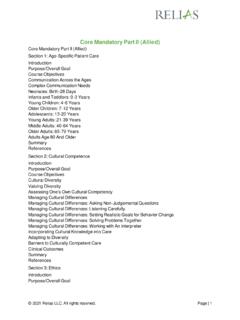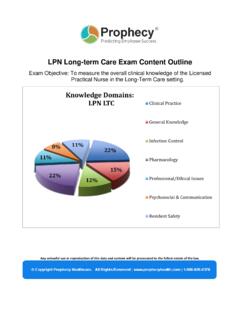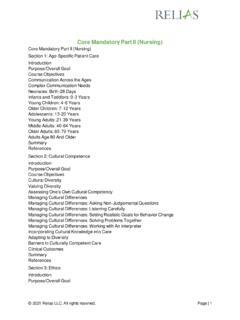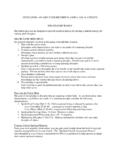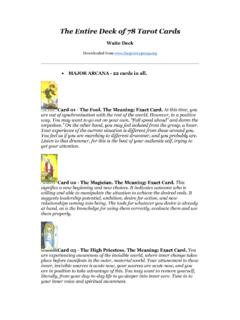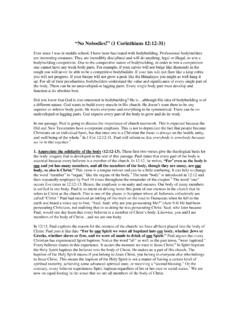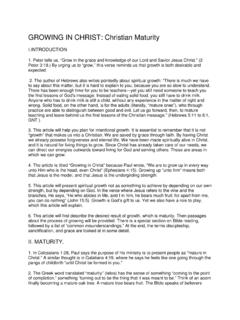Transcription of Core Mandatory Part II (Non-Licensed)
1 2021 Relias LLC. All rights reserved. Page | 1 Core Mandatory Part II (Non-Licensed) Core Mandatory Part II (Allied) Section 1: Age-Specific Patient Care Introduction Purpose/Overall Goal Course Objectives Communication Across the Ages Complex Communication Needs Neonates: Birth-28 Days Infants and Toddlers: 0-3 Years Young Children: 4-6 Years Older Children: 7-12 Years Adolescents: 13-20 Years Young Adults: 21-39 Years Middle Adults: 40-64 Years Older Adults: 65-79 Years Adults Age 80 And Older Summary References Section 2: Cultural Competence Introduction Purpose/Overall Goal Course Objectives Cultural Diversity Valuing Diversity Assessing One s Own Cultural Competency Managing Cultural Differences Managing Cultural Differences: Asking Non-Judgemental Questions Managing Cultural Differences.
2 Listening Carefully Managing Cultural Differences: Setting Realistic Goals for Behavior Change Managing Cultural Differences: Solving Problems Together Managing Cultural Differences: Working with An Interpreter Incorporating Cultural Knowledge into Care Adapting to Diversity Barriers to Culturally Competent Care Clinical Outcomes Summary References Section 3: Ethics Introduction Purpose/Overall Goal Core Mandatory Part II (Non-Licensed) 2021 Relias LLC. All rights reserved. Page | 2 Course Objectives Ethical Standards Organizational Ethics Individual Rights Individual Responsibilities Benefits of An Ethics Program Integrated Ethics Model Shared Decision-Making with Patients Patient Privacy and Confidentiality Professionalism in Patient Care Ethical Practices in the Workplace Summary References Section 4: 2021 National Patient Safety Goals for Hospitals Nursing Education Module Introduction Course Objectives Goal 1: Improve the accuracy of patient identification.
3 Goal 2: Improve the effectiveness of communication among caregivers. Goal 3: Improve the safety of using medications. Goal 6: Reduce the harm associated with clinical alarm systems. Goal 7: Reduce the risk of healthcare-associated infections. Goal 15: The hospital identifies safety risks inherent in its patient population. Universal Protocol Resources Section 5: Patient Rights Introduction Purpose/Overall Goal Course Objectives The Patient s Bill Of Rights Nurses as Patient Advocate Patient Responsibilities Summary References Section 6: Patient Safety Systems and Events Introduction Purpose/Overall Goal Course Objectives Key Terms Sentinel Events Comprehensive Systematic Analysis Action Plans Patient Safety Systems Core Mandatory Part II (Non-Licensed) 2021 Relias LLC.
4 All rights reserved. Page | 3 Summary References Section 7: Conclusion Course Summary Course Contributor Congratulations! Section 1: Age-Specific Patient Care Introduction Every patient is different and so is every age group. As a caregiver, you must be aware of certain considerations related to each age group and ways to effectively communicate with patients of various ages. It is important to understand patient needs and what they might be facing at certain times of their lives. This can help you identify issues such as speech or hearing impairments, stress, learning disabilities, depression, and much more. Educating yourself about these factors can help you deliver the best care possible to your patients. Purpose/Overall Goal This module outlines age-specific care and best practices for nine different age groups, from birth to age 80 and beyond.
5 The goal of this module is to provide healthcare workers with information on how to physical, emotional, social, spiritual , and other needs for different age groups, and how to adjust your patient care with age-specific needs in mind. Course Objectives After completing this module, the learner should be able to: Demonstrate appropriate communication skills for various age groups Describe appropriate healthcare practices for various age groups Explain physical and emotional considerations for patients of different ages Describe common health conditions to assess in patients at various life stages Communication Across the Ages As a healthcare worker, clear communication with patients is key to providing good age- specific care. Each age group has unique physical, psychosocial, and cognitive needs, as well as unique fears and stressors.
6 By understanding the age-specific needs usually associated with each stage of life, you can provide better, more appropriate care, tailored to the needs of each individual. For every patient across all age groups you should: Assess primary language Check for speech or hearing impairments Core Mandatory Part II (Non-Licensed) 2021 Relias LLC. All rights reserved. Page | 4 Check for confusion, depression, and signs of illness or stress Be aware of possible learning disabilities Be mindful of cultural differences Understand family structure Regardless of a patient s age, caregivers must respond to the need of each patient and family for: Safety Privacy Confidentiality Comfort Pain management Healthcare choices Complex Communication Needs Keep in mind that individuals with complex communication needs (CCN) who cannot communicate by natural speech alone have the same social, emotional, and physical needs as other individuals.
7 Communication supports, also known as augmentative and alternative communication (AAC), can help these individuals express themselves. Examples of AACs include: Gestures and body language Sign language Paper and pencil written communications Picture boards or books Devices that produce voice output (speech generating devices) or written output Electronic communication aids that use picture symbols, letters, and/or words and phrases to create messages Neonates: Birth-28 Days The first 28 days of life are a time when neonates are in a state of total dependency and their basic body functions are being established. The following is a checklist of functions to test: Reflexes such as grasping, gagging, and startling Vital signs (temperature, pulse, respiration) Steady weight gain Blood glucose levels when appropriate Keep these practices in mind: Always handle the neonate in a gentle, comforting manner to avoid overstimulation.
8 Swaddling increases feeling of security and comfort. Teach parents proper childcare skills for feeding, diapering, cord care, and bathing. Teach parents to always put the baby down on his or her back for sleeping, to help avoid sudden infant death syndrome (SIDS). Make sure parents understand the importance of safety devices such as car seats. Core Mandatory Part II (Non-Licensed) 2021 Relias LLC. All rights reserved. Page | 5 Infants and Toddlers: 0-3 Years Infants and toddlers grow and learn rapidly. Although they are dependent, this is when they begin to develop a separate self. With infants: Limit the number of staff workers assigned to each one to avoid stranger anxiety. Always speak to an infant before a touch to avoid startling him or her.
9 When delivering care to toddlers: Keep in mind that toddlers are impulsive and their moods change quickly. Expect an exaggerated response to pain, frustration, and changes in the environment. Give one direction at a time, since toddlers have a short attention span. Speak at eye level with the child and maintain eye contact. Discuss procedures with toddlers immediately before they happen, not too far in advance, since their sense of time is the immediate present. Use play to prepare for and explain procedures. Provide support and comfort during procedures. Use the least intrusive procedures possible, such as axillary temperature and oral medications. When speaking with parents: Emphasize proper hand-washing to prevent disease transmission. Encourage parents to communicate with the child, and to touch and cuddle.
10 In infants and young children, small veins may make inserting an intravenous (IV) line a challenge. Keep these facts in mind: Be aware that the child may want to play with the IV tubing. Secure the site with a transparent dressing so you can see it easily. Inspect and palpate the site every hour. Avoid wrapping tape too tightly. Young Children: 4-6 Years For children ages 4 to 6 years, some common fears are the dark, being left alone, and bodily injury. It is important to advise parents to: Keep immunizations and checkups on schedule Teach the child healthy habits for nutrition and grooming Learn about safety equipment such as bicycle helmets, elbow pads, and kneepads Enforce safety issues regarding fire and pools When providing care: Explain the procedure to the child as well as the parents.
